
Küçüksu Kasry or Geksu Kasry (Küçüksu Pavilion, Turkish name: Küçüksu Kasrı) is a magnificent neo-Baroque palace in Istanbul, which served as the summer residence of the sultans of the Ottoman Empire, and today is a museum with palace halls.
The Kücüksu Palace is located on the Asian side of Istanbul, near the waters of the Bosphorus Strait, in the Göksu district, between Anatolian Fortress and Sultan Mehmed Fatih Bridge.
The palace got its name thanks to the small rivers that frame it.
Translated from Turkish, the palace is called as "The Palace of Heavenly Water" or "The Palace of small water".
View of the Kyuchuksu Palace and the adjacent ensemble of the area from the waters of the Bosphorus
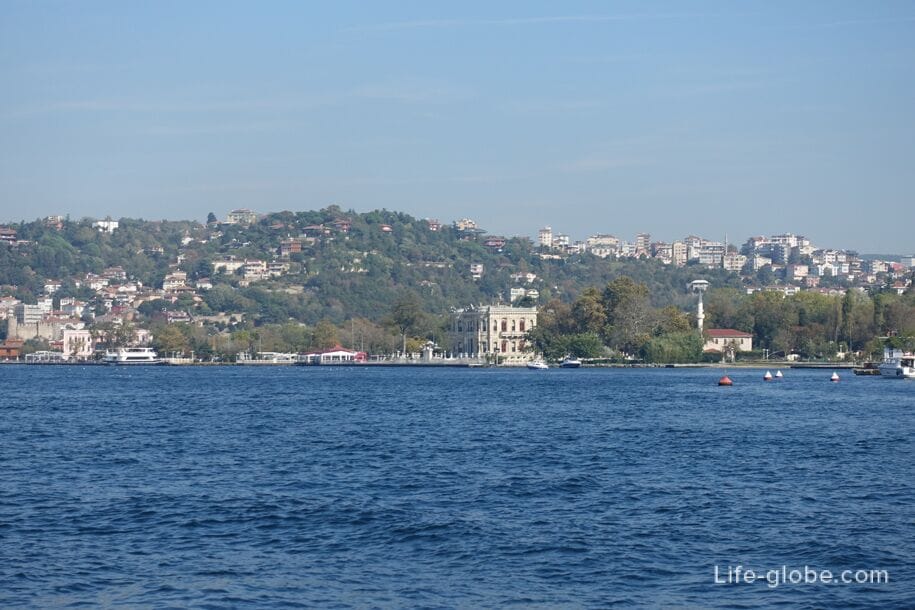
This miniature neo-Baroque palace was built in 1857 by order of Sultan Abd-ul-Majid I, designed by architects Karabet Amir Balyan and his son Nigogayos Balyan. The construction of the palace was carried out on the site of a two-story wooden palace built during the reign of Mahmud I.
The interior decoration and arrangement of the pavilion palace was carried out by the Paris Opera decorator Sechan, who was also responsible for the interior design of the Dolmabahce Palace on the opposite side of the Bosphorus in Istanbul.
The sultans used the Kyuchuksu Palace for summer short-term stays during recreation and hunting. The palace also served as a venue for many diplomatic receptions. Russian Prince Konstantin Nikolaevich (younger brother of Emperor Alexander II), was one of the first guests to visit this place.
During the reign of Sultan Abd-ul-Aziz, the facade of the palace was decorated with more elaborate decoration; some of the original garden buildings were also demolished. At the beginning of the Republican era, a state guest house was located within the walls of the palace for several years. After a thorough restoration in 1944, the palace was opened to the public as a museum.
Today, the Kyuchuksu Palace is a striking monument of the Ottoman Empire and functions as a museum with recreated palace interiors.
The palace itself consists of two main floors and a basement. It has dimensions of 15x27 meters and a lot of decorations on the facades. The side of the palace facing the Bosphorus has a more elegant and rich appearance compared to other facades, since the sultans, coming to the palace, preferred the boat way - from the water. Wide marble staircases lead to the entrances to the palace.
The palace has a small adjacent territory in the form of a garden with a terrace by the waters of the Bosphorus Strait. Once the garden was decorated with garden pavilions, most of which are now lost. The territory is surrounded by a fence with an openwork lattice and a gate.
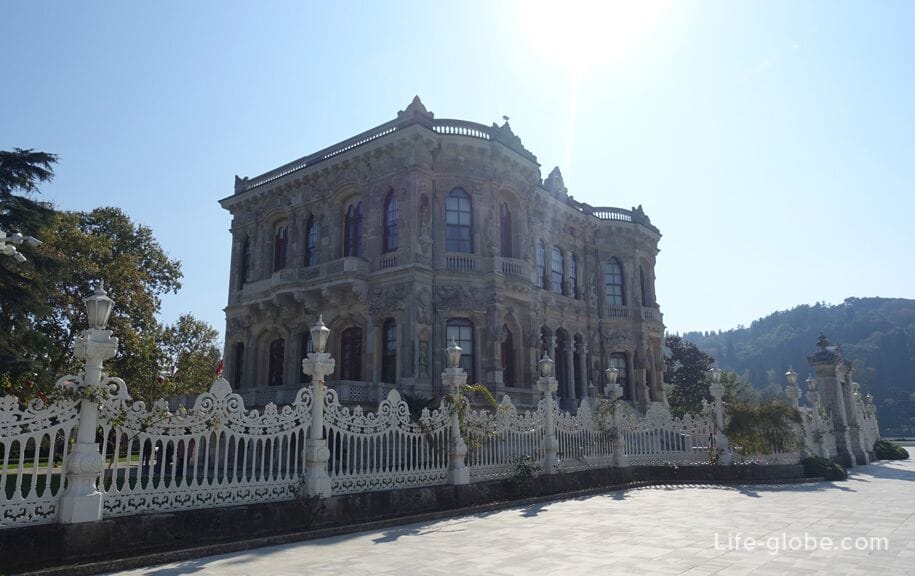
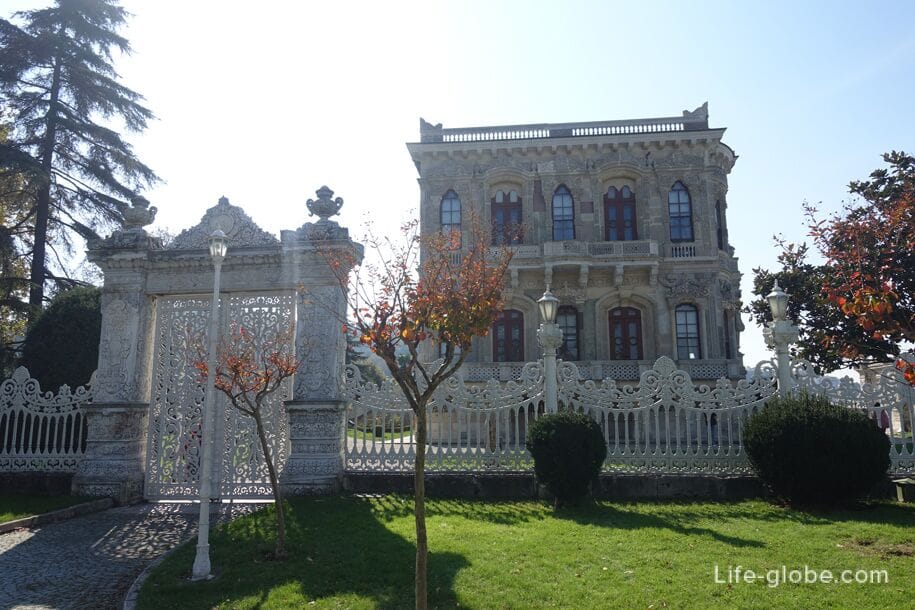
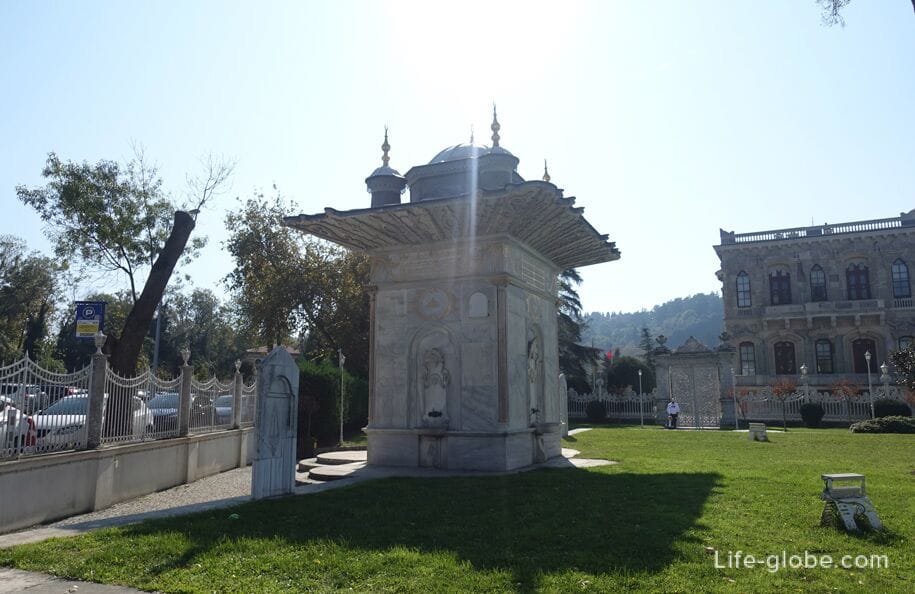
View of the palace from the main facade

View of the palace from the Bosphorus
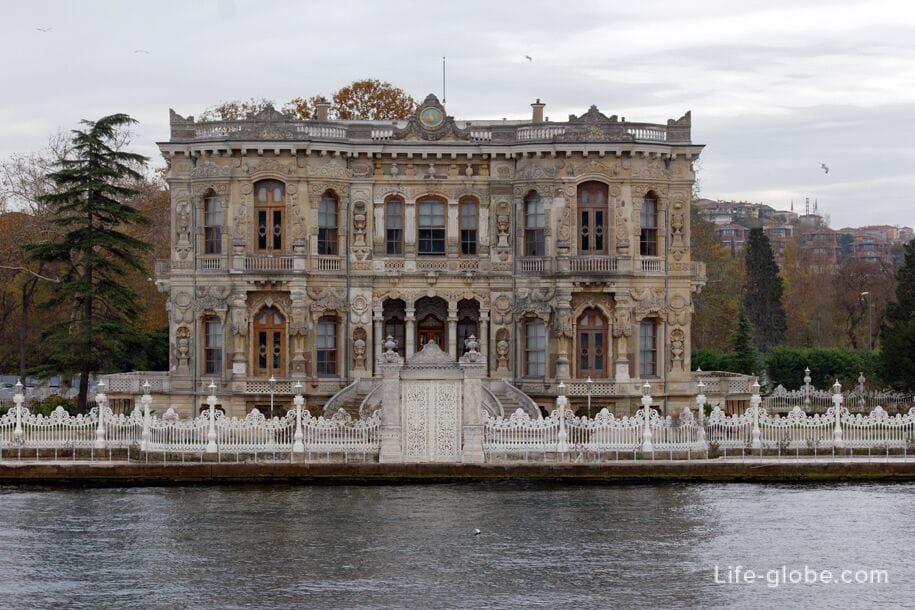
The ground floor of the Geksu Palace was used as a kitchen and cellar, and also served as a room for servants.
The upper floors, intended for use by the monarch and guests, were arranged in the characteristic layout of Turkish houses - four rooms opening into the hall in the middle.
Today, the interiors of the palace attract attention with stucco, hand-embroidered ornaments and exquisite parquet. The rooms are furnished with Western-style furniture, decorated with works of art, fireplaces made of Italian marble, carpets, crystal chandeliers from Bohemia, mirrors, vases and other interior items.


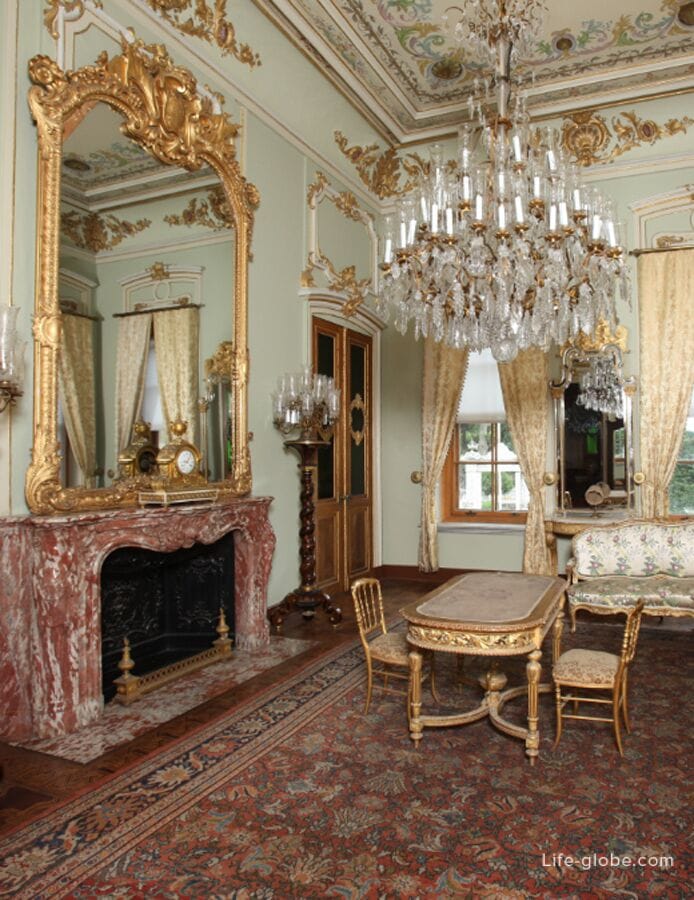


Address of the Küçüksu Palace: Göksu, Küçüksu Cd., 34810 Beykoz/Istanbul, Turkey.
Coordinates of the Kyuchuksu Palace: 41°04'42.0"N 29°03'53.0"E (41.078333, 29.064722).
Entrance to the territory of the palace and to the palace itself is paid. The ticket offices are located at the entrance to the palace garden.
We recommend checking all information about the Kucuksu Museum-Palace, including opening hours, current ticket prices, etc., before visiting the official website: kucuksu-kasri.
All accommodation facilities in Istanbul, including in the historical center, on the European and Asian sides of the city, can be viewed and booked here